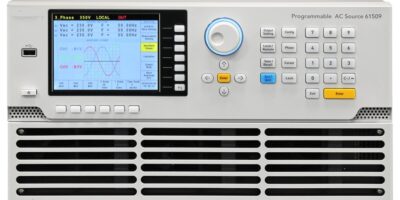Introduction
The Very High Frequency Data Exchange System (VDES) represents a significant advancement in maritime communication, combining traditional maritime radio communication with modern data exchange capabilities. VDES operates in the VHF (Very High Frequency) band and aims to improve maritime safety, navigation, and efficiency by enabling high-capacity, bidirectional data communication between ships, shore stations, and satellites. This comprehensive overview delves into the VDES market, exploring its current state, growth drivers, opportunities, key trends, challenges, and future outlook.
- Market Overview
1.1. Definition and Components
VDES is a hybrid communication system that integrates:
- VHF Digital Exchange: Enhances traditional Automatic Identification System (AIS) functionalities with higher data rates and additional communication channels.
- Satellite VDES (S-VDES): Extends VDES capabilities to satellite communication, allowing global coverage and communication beyond the line-of-sight.
- Shore-to-Ship and Ship-to-Ship Communication: Facilitates efficient communication between ships and shore stations, as well as direct ship-to-ship data exchange.
The VDES architecture includes both terrestrial and satellite components, enabling seamless communication in various maritime scenarios.
1.2. Market Size and Growth Rate
As of 2024, the VDES market is valued at approximately $400 million and is projected to grow at a compound annual growth rate (CAGR) of around 8% over the next decade . This growth is driven by the increasing adoption of VDES technology in maritime navigation, safety applications, and its integration with global maritime traffic management systems.
1.3. Key Players
Prominent players in the VDES market include:
- Saab AB: Known for its advancements in maritime communication systems and VDES technology.
- CML Microcircuits: Specializes in VHF communication components for maritime applications.
- Kongsberg Gruppen: Offers integrated maritime solutions including VDES systems.
- Iridium Communications: Provides satellite communication services that complement VDES functionalities.
- CETC (China Electronics Technology Group Corporation): Develops and manufactures maritime communication equipment.
These companies play a crucial role in the development, deployment, and expansion of VDES technology globally.
- Market Demand and Applications
2.1. Demand Drivers
- Enhanced Maritime Safety: VDES improves the capabilities of the AIS by providing higher data rates and additional channels for safety-related communication. This includes real-time weather updates, navigational warnings, and emergency response coordination .
- Regulatory Compliance: Increasing international regulations and standards, such as those set by the International Maritime Organization (IMO), drive the adoption of VDES for enhanced maritime communication and traffic management .
- Efficiency in Maritime Operations: VDES enables efficient data exchange between ships and shore stations, facilitating better traffic management, route optimization, and overall operational efficiency .
- Global Maritime Traffic Growth: The expansion of global maritime trade and the corresponding increase in vessel traffic necessitate robust communication systems like VDES to manage traffic and enhance coordination .
- Integration with Digital Maritime Infrastructure: The integration of VDES with digital maritime infrastructure, such as e-navigation and smart ports, supports the broader goals of digitalization in the maritime industry .
2.2. Application Areas
- Maritime Safety and Navigation: VDES provides critical communication capabilities for navigational safety, including collision avoidance, search and rescue operations, and weather information dissemination .
- Maritime Traffic Management: Enhances vessel traffic services (VTS) by enabling real-time data exchange for better monitoring, coordination, and management of maritime traffic .
- Fleet Management: Supports efficient fleet management through real-time tracking, monitoring, and communication, allowing for better operational control and decision-making .
- Environmental Monitoring: Facilitates the transmission of environmental data, such as water quality and marine pollution levels, supporting environmental monitoring and management .
- Search and Rescue Operations: Enhances search and rescue operations by providing real-time communication capabilities, enabling quicker response and coordination during emergencies .
- Key Growth Drivers
3.1. Technological Advancements in Maritime Communication
- Higher Data Rates: VDES offers higher data rates compared to traditional AIS, allowing for the transmission of more comprehensive and detailed information, including electronic navigational charts (ENCs) and real-time updates .
- Extended Range with Satellite Integration: The integration of satellite communication capabilities extends the range of VDES, enabling global coverage and communication beyond the line-of-sight, which is crucial for long-distance maritime communication .
- Improved Spectrum Efficiency: VDES utilizes advanced modulation and coding techniques to enhance spectrum efficiency, allowing more data to be transmitted within the available VHF channels .
3.2. Regulatory and Standardization Efforts
- International Maritime Organization (IMO) Regulations: IMO’s regulations on maritime safety and communication drive the adoption of VDES as a standard for maritime communication systems .
- Standardization by ITU and IALA: The International Telecommunication Union (ITU) and the International Association of Marine Aids to Navigation and Lighthouse Authorities (IALA) play key roles in standardizing VDES, ensuring compatibility and interoperability across different systems and regions .
3.3. Increasing Maritime Trade and Traffic
- Growth of Global Maritime Trade: The continuous growth of global maritime trade necessitates efficient communication systems to manage increased vessel traffic and enhance coordination .
- Expansion of Shipping Routes: The opening of new shipping routes and the development of maritime infrastructure in emerging markets drive the demand for advanced communication systems like VDES .
3.4. Adoption of Digital Maritime Infrastructure
- Digitalization of Ports and Shipping: The move towards digital ports and smart shipping requires robust communication systems to support real-time data exchange and integration with digital maritime infrastructure .
- Implementation of E-Navigation: E-navigation initiatives promote the use of electronic and digital tools for navigation, where VDES plays a critical role in facilitating data exchange and communication .
- Opportunities in the VDES Market
4.1. Emerging Markets and New Applications
- Deployment in Developing Regions: The expansion of maritime infrastructure in developing regions presents significant opportunities for the deployment of VDES, supporting enhanced communication and safety in these areas .
- Integration with Autonomous Ships: VDES provides the communication backbone for autonomous ships, enabling real-time data exchange and remote control, which is essential for the safe and efficient operation of autonomous vessels .
4.2. Technological Innovations
- Development of Hybrid Communication Systems: The integration of VDES with other communication systems, such as LTE and satellite communication, offers opportunities for developing hybrid communication solutions that provide seamless connectivity in various maritime scenarios .
- Advancements in Modulation and Coding Techniques: Innovations in modulation and coding techniques can enhance the performance of VDES, enabling higher data rates, improved reliability, and better spectrum utilization .
4.3. Expansion into Non-Traditional Maritime Sectors
- Fisheries and Aquaculture: VDES can support communication needs in fisheries and aquaculture, enabling better monitoring and management of these sectors .
- Offshore Energy: The offshore energy sector, including oil and gas and renewable energy installations, can benefit from VDES for communication and data exchange, enhancing operational efficiency and safety .
4.4. Enhancements in Maritime Security
- Support for Anti-Piracy Operations: VDES can enhance maritime security by supporting anti-piracy operations through real-time communication and data exchange, enabling better coordination and response .
- Integration with Surveillance Systems: The integration of VDES with maritime surveillance systems provides opportunities for enhanced monitoring and security, supporting maritime law enforcement and protection efforts .
Receive the FREE Sample Report of Very High Frequency Data Exchange System (VDES) Market Research Insights @ https://stringentdatalytics.com/sample-request/very-high-frequency-data-exchange-system-(vdes)-market/9855/
Market Segmentations:
Global Very High Frequency Data Exchange System (VDES) Market: By Company
• Kongsberg
• Saab
• CML Microsystems
• Aohai Technology
• Chiwan Communications Satellite
Global Very High Frequency Data Exchange System (VDES) Market: By Type
• Ground Based VDES System
• Space Based VDES System
Global Very High Frequency Data Exchange System (VDES) Market: By Application
• Government
• Personal
• Enterprise
Regional Analysis of Global Very High Frequency Data Exchange System (VDES) Market
All the regional segmentation has been studied based on recent and future trends, and the market is forecasted throughout the prediction period. The countries covered in the regional analysis of the Global Very High Frequency Data Exchange System (VDES) market report are U.S., Canada, and Mexico in North America, Germany, France, U.K., Russia, Italy, Spain, Turkey, Netherlands, Switzerland, Belgium, and Rest of Europe in Europe, Singapore, Malaysia, Australia, Thailand, Indonesia, Philippines, China, Japan, India, South Korea, Rest of Asia-Pacific (APAC) in the Asia-Pacific (APAC), Saudi Arabia, U.A.E, South Africa, Egypt, Israel, Rest of Middle East and Africa (MEA) as a part of Middle East and Africa (MEA), and Argentina, Brazil, and Rest of South America as part of South America.
Click to Purchase Very High Frequency Data Exchange System (VDES) Market Research Report @ https://stringentdatalytics.com/purchase/very-high-frequency-data-exchange-system-(vdes)-market/9855/
- Development Trends
5.1. Integration with Digital Maritime Infrastructure
- Seamless Connectivity with E-Navigation: VDES supports seamless connectivity with e-navigation systems, enabling efficient data exchange and integration with digital tools for navigation and maritime operations .
- Support for Smart Port Initiatives: The development of smart ports, with advanced digital infrastructure and automated systems, relies on robust communication systems like VDES to facilitate real-time data exchange and coordination .
5.2. Advancements in Satellite Communication
- Expansion of Satellite VDES (S-VDES): The expansion of satellite VDES capabilities enhances global coverage and enables communication beyond traditional terrestrial VDES range, supporting long-distance maritime communication needs .
- Integration with Low-Earth Orbit (LEO) Satellites: The use of LEO satellites for VDES enhances communication performance by providing lower latency and higher data rates, supporting real-time applications and global connectivity .
5.3. Improved Spectrum Efficiency and Utilization
- Advanced Modulation Techniques: The adoption of advanced modulation techniques improves spectrum efficiency, allowing more data to be transmitted within the available VHF channels, supporting higher data rates and better performance .
- Dynamic Spectrum Allocation: The use of dynamic spectrum allocation techniques enhances the flexibility and efficiency of VDES, allowing for better utilization of available spectrum resources and adaptation to changing communication needs .
5.4. Focus on Interoperability and Standardization
- Development of Interoperable Systems: The focus on developing interoperable VDES systems ensures compatibility with existing maritime communication systems and supports seamless integration across different platforms and regions .
- Adherence to International Standards: Compliance with international standards and regulations ensures the reliability and compatibility of VDES systems, supporting their adoption and deployment globally .
- Market Challenges
6.1. Technical Challenges
- Spectrum Allocation and Interference: Managing spectrum allocation and mitigating interference issues pose technical challenges for the deployment of VDES, requiring advanced techniques for spectrum management and interference mitigation .
- Integration with Existing Systems: Integrating VDES with existing maritime communication systems presents challenges, including compatibility issues and the need for system upgrades and modifications .
6.2. Cost and Economic Challenges
- High Implementation Costs: The implementation of VDES involves significant costs, including the development of infrastructure, equipment, and systems, which can impact the overall affordability and adoption of VDES .
- Economic Viability in Emerging Markets: Ensuring the economic viability of VDES in emerging markets, where budget constraints and economic challenges may limit investment in new communication technologies, presents a challenge for market growth .
6.3. Regulatory and Compliance Issues
- Compliance with Regional Regulations: Navigating regional regulatory requirements and ensuring compliance with diverse regulations across different regions and countries add complexity to the deployment and operation of VDES .
- Addressing Security Concerns: Ensuring the security and integrity of VDES communication systems, particularly in light of increasing cybersecurity threats, presents regulatory and technical challenges .
- Future Outlook
7.1. Market Growth Projections
- Expansion of Maritime Communication Infrastructure: The continuous expansion of maritime communication infrastructure, driven by the growth of global maritime trade and the need for enhanced communication systems, is expected to drive the growth of the VDES market .
- Adoption in Emerging Markets: The adoption of VDES in emerging markets, supported by the development of maritime infrastructure and increasing maritime traffic, is expected to contribute to the growth of the VDES market .
7.2. Technological Innovations
- Advancements in Satellite Communication Technologies: Continued advancements in satellite communication technologies, including the use of LEO satellites and improvements in satellite VDES, are expected to enhance the performance and capabilities of VDES .
- Development of Advanced Modulation and Coding Techniques: Innovations in modulation and coding techniques are expected to improve the efficiency and performance of VDES, supporting higher data rates and better spectrum utilization .
7.3. Evolving Market Dynamics
- Integration with Autonomous Maritime Systems: The integration of VDES with autonomous maritime systems and vessels is expected to drive new developments and applications, supporting the advancement of autonomous navigation and operations .
- Focus on Sustainability and Environmental Monitoring: The increasing focus on sustainability and environmental monitoring in the maritime industry is expected to drive the development and adoption of VDES for environmental data exchange and monitoring .
About Stringent Datalytics
Stringent Datalytics offers both custom and syndicated market research reports. Custom market research reports are tailored to a specific client’s needs and requirements. These reports provide unique insights into a particular industry or market segment and can help businesses make informed decisions about their strategies and operations.
Syndicated market research reports, on the other hand, are pre-existing reports that are available for purchase by multiple clients. These reports are often produced on a regular basis, such as annually or quarterly, and cover a broad range of industries and market segments. Syndicated reports provide clients with insights into industry trends, market sizes, and competitive landscapes. By offering both custom and syndicated reports, Stringent Datalytics can provide clients with a range of market research solutions that can be customized to their specific needs.
Reach US
Stringent Datalytics
+1 346 666 6655
Social Channels:




Leave a Reply